Abstract
The purpose of this cohort study is to shed further light on the potential carcinogenic effect indicated by a Swedish case control study of the 2,4-dichlorophenol and 4-chloro-ortho-cresol based phenoxy herbicides, unlikely to be contaminated with 2,3,7,8-tetrachlorodibenzo-p-dioxin (2,3,7,8-TCDD). In the present study it was the intention to include all persons employed in manufacture of phenoxy herbicides in Denmark before 1982. The predominant product was MCPA and only a very limited amount of 2,4,5-T was processed in one of the two factories included in the study. Registration of the cohort was based on company records, supplemented with data from a public pension scheme from 1964 onwards. Ninety-nine percent of registered employees could be followed up. Cancer cases were identified by linkage with the National Cancer Register. Totals of 3,390 males and 1,069 females were included in the study. In the analysis special attention was given to soft tissue sarcomas (STS) and malignant lymphomas (ML) which are the diagnostic groups indicated to be associated with exposure to phenoxy herbicides in the Swedish studies. Five cases of STS were observed among male employees in contrast to 1.84 expected cases. This result supports the Swedish observation of an increased risk of STS following exposure to phenoxy herbicides unlikely to be contaminated with 2,3,7,8-TCDD. However, several potential biases have to be taken into account in interpretation of this observation and these are discussed. Seven cases of ML were observed among male employees in contrast to 5.37 expected which does not support the Swedish observation of an excess risk. The total cancer risk among persons employed in manufacture and packaging of phenoxy herbicides was equivalent to the cancer risk in the Danish population. Among males thus employed 11 lung cancer cases were observed in contrast to 5.33 expected. Attention should be given to exposure to spray dried MCPA-sodium salt in the plants, but other work place exposures and tobacco consumption may have contributed to the increased risk. The tabulation of data by many diagnostic groups may explain the excesses observed for rectum cancer among males and cervical cancer among females. The study has revealed that several potential biases have to be taken into account when the Swedish observations are tested in other settings.
Full text
PDF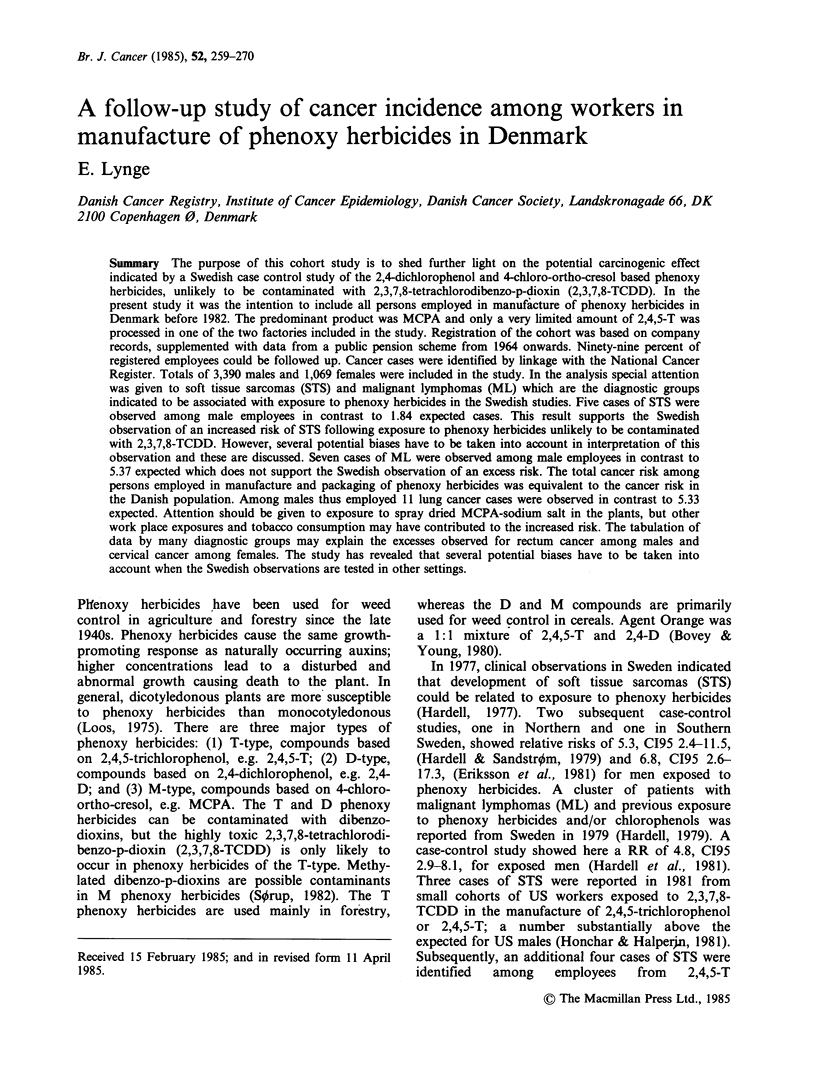
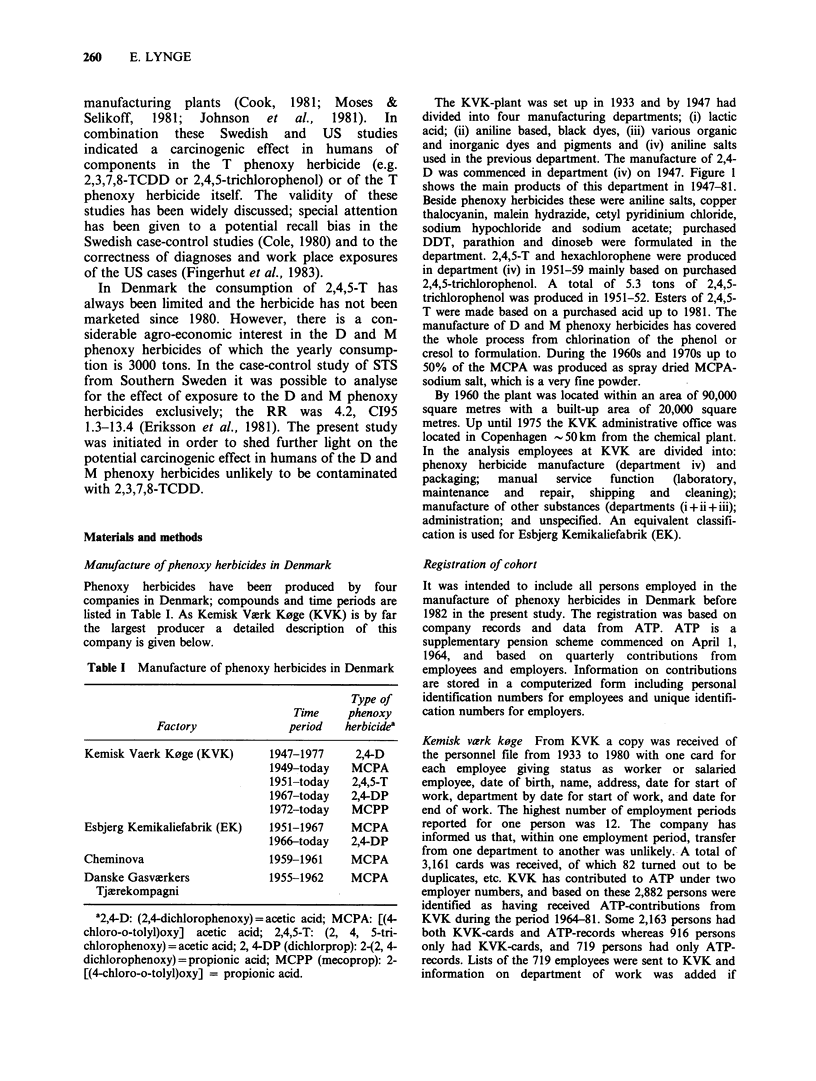
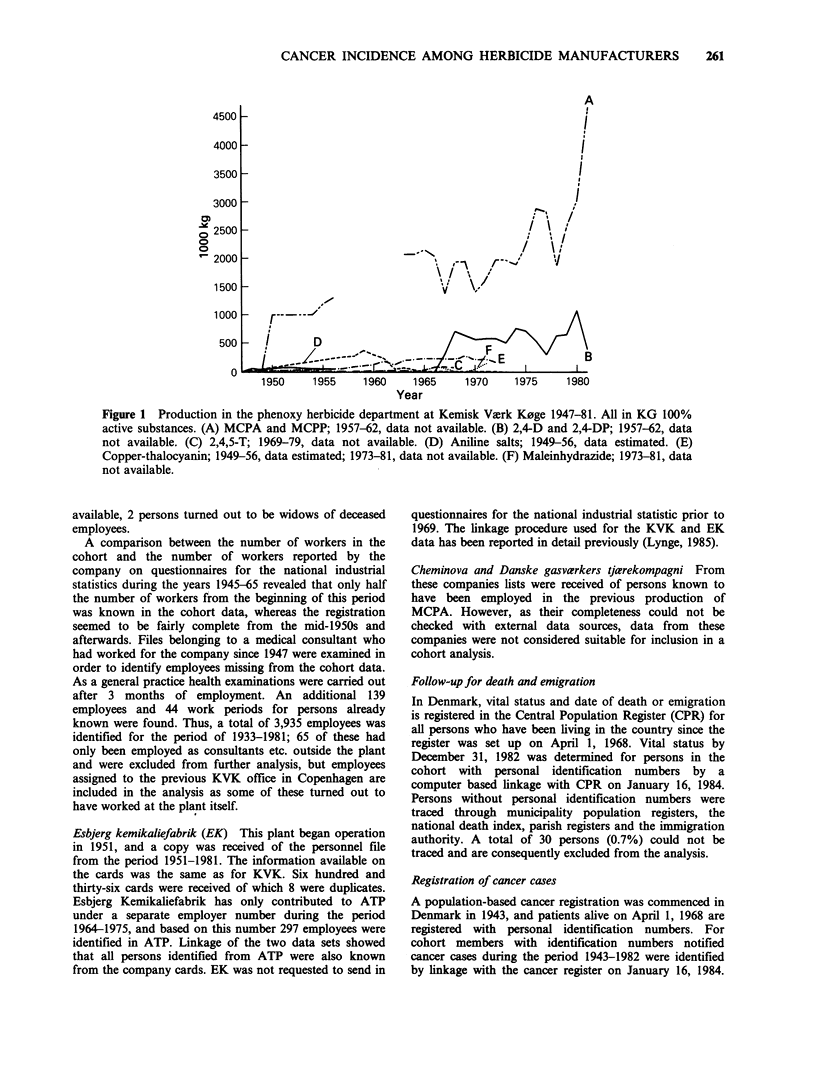
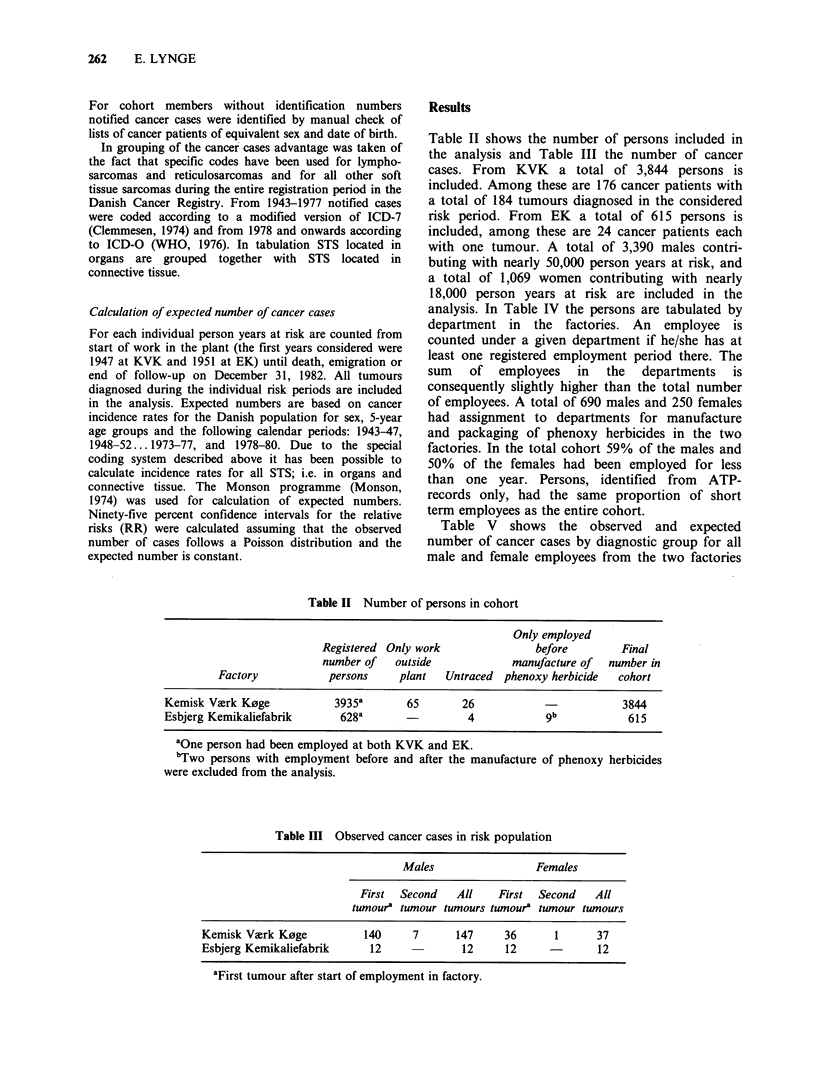
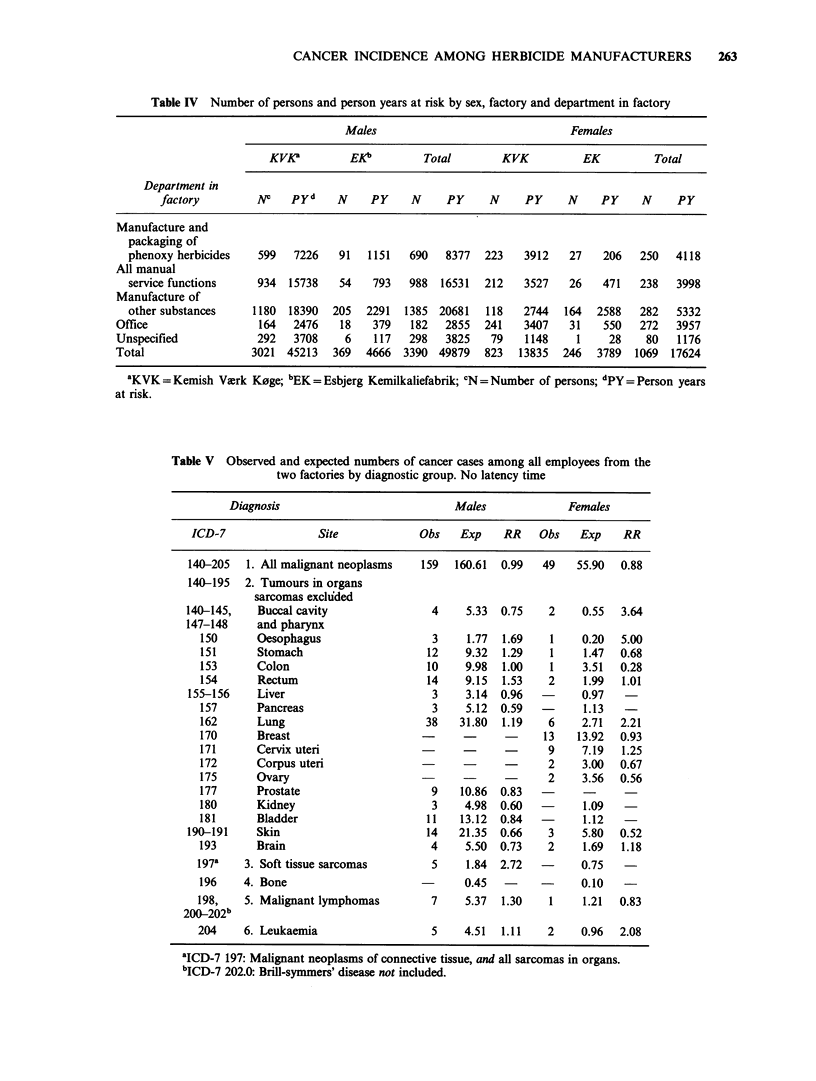
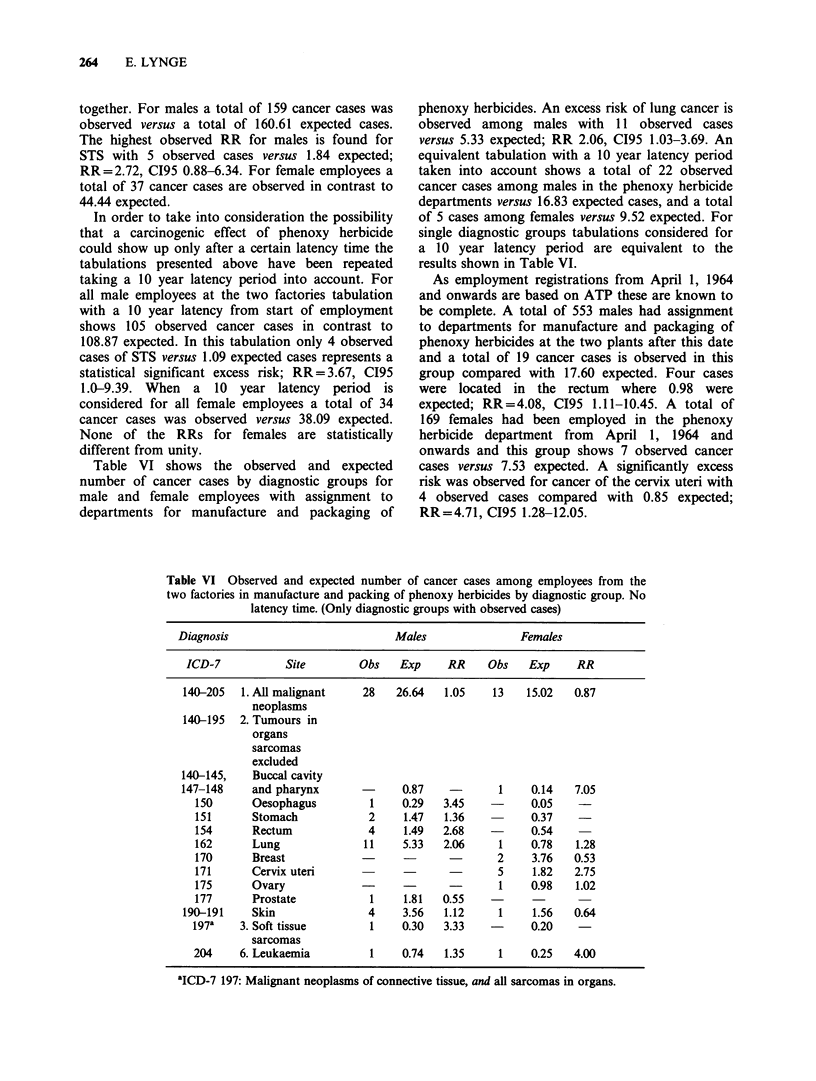
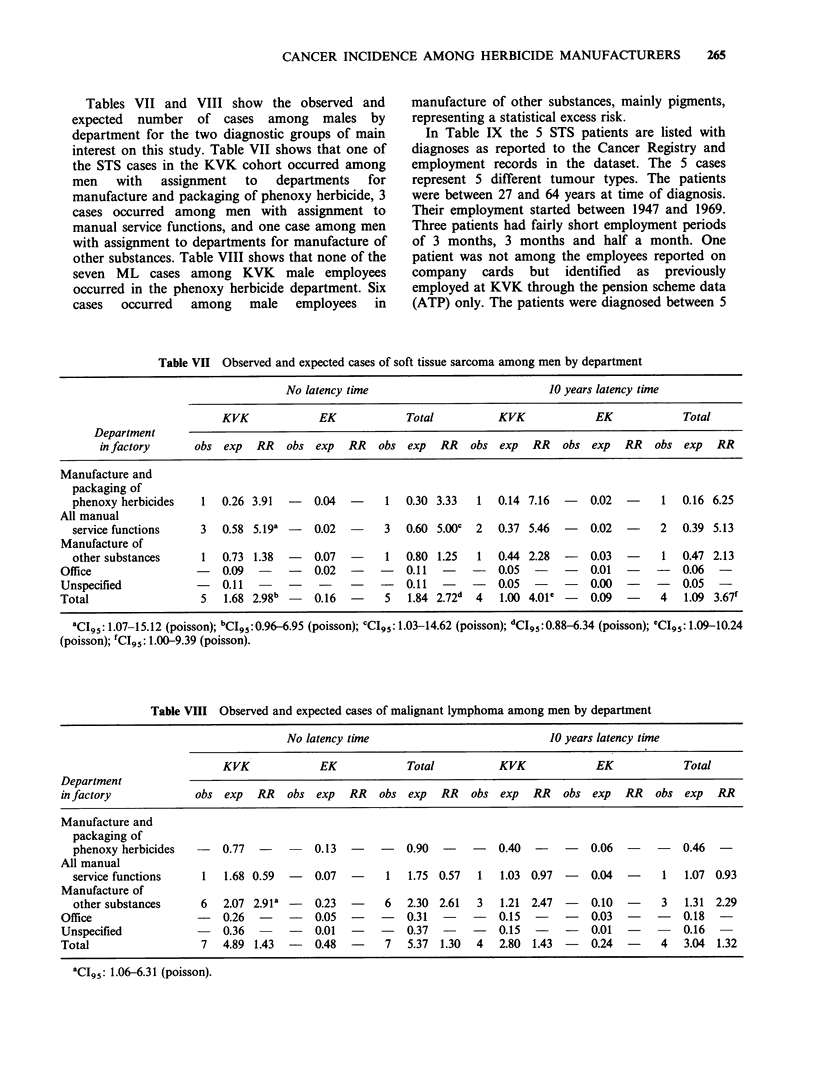

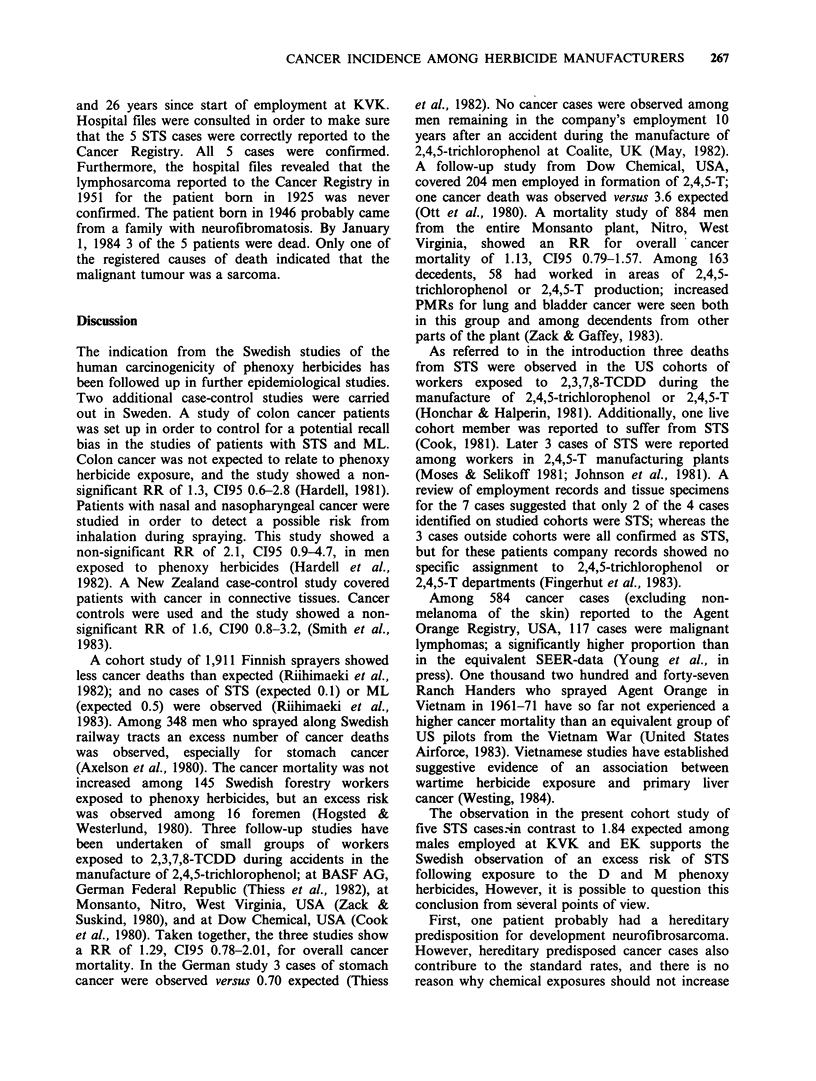
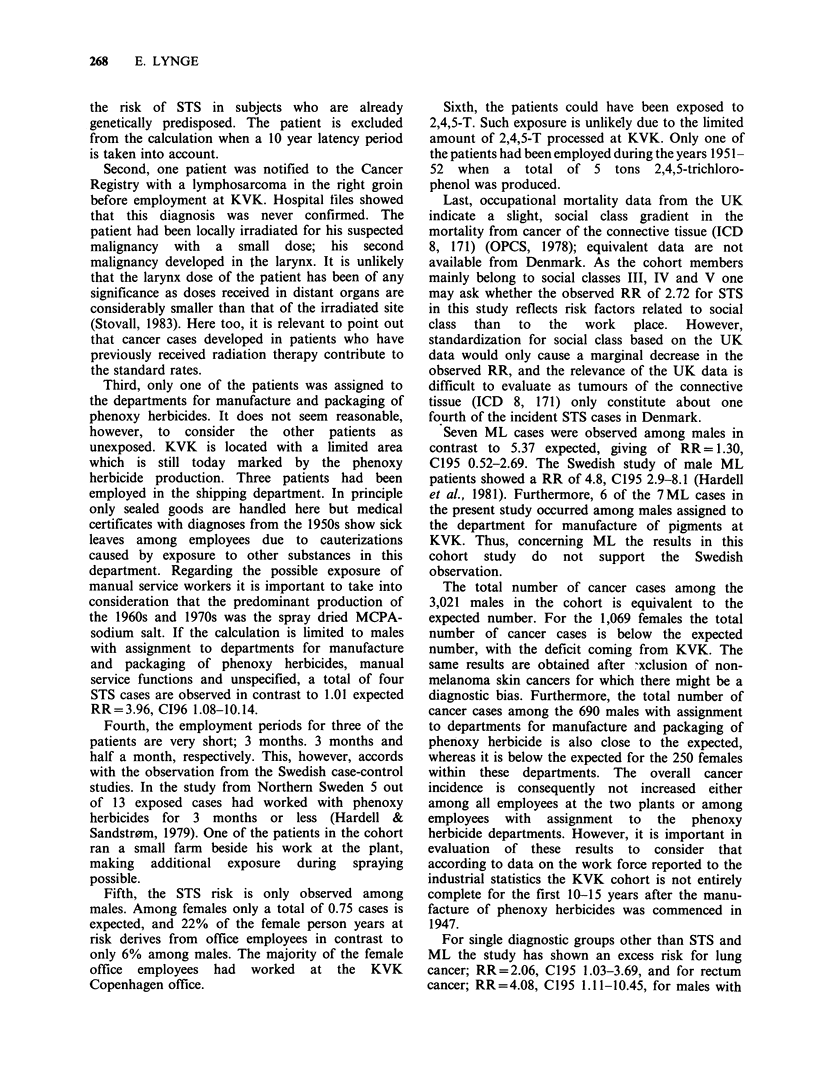
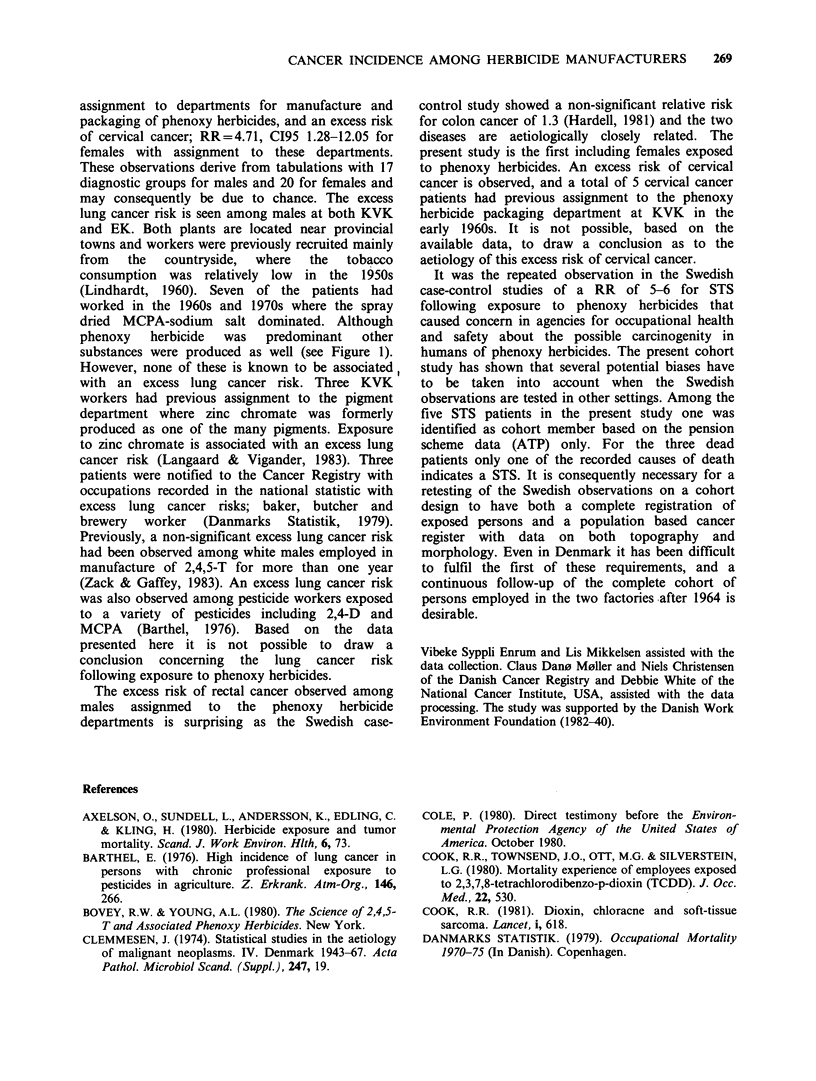

Selected References
These references are in PubMed. This may not be the complete list of references from this article.
- Axelson O., Sundell L., Andersson K., Edling C., Hogstedt C., Kling H. Herbicide exposure and tumor mortality. An updated epidemiologic investigation on Swedish railroad workers. Scand J Work Environ Health. 1980 Mar;6(1):73–79. doi: 10.5271/sjweh.2631. [DOI] [PubMed] [Google Scholar]
- Cook R. R. Dioxin, chloracne, and soft tissue sarcoma. Lancet. 1981 Mar 14;1(8220 Pt 1):618–619. doi: 10.1016/s0140-6736(81)92070-5. [DOI] [PubMed] [Google Scholar]
- Cook R. R., Townsend J. C., Ott M. G., Silverstein L. G. Mortality experience of employees exposed to 2,3,7,8-tetrachlorodibenzo-p-dioxin (TCDD). J Occup Med. 1980 Aug;22(8):530–532. doi: 10.1097/00043764-198008000-00009. [DOI] [PubMed] [Google Scholar]
- Eriksson M., Hardell L., Berg N. O., Möller T., Axelson O. Soft-tissue sarcomas and exposure to chemical substances: a case-referent study. Br J Ind Med. 1981 Feb;38(1):27–33. doi: 10.1136/oem.38.1.27. [DOI] [PMC free article] [PubMed] [Google Scholar]
- Fingerhut M. A., Halperin W. E., Honchar P. A., Smith A. B., Groth D. H., Russell W. O. An evaluation of reports of dioxin exposure and soft tissue sarcoma pathology among chemical workers in the United States. Scand J Work Environ Health. 1984 Oct;10(5):299–303. doi: 10.5271/sjweh.2325. [DOI] [PubMed] [Google Scholar]
- Hardell L., Eriksson M., Lenner P., Lundgren E. Malignant lymphoma and exposure to chemicals, especially organic solvents, chlorophenols and phenoxy acids: a case-control study. Br J Cancer. 1981 Feb;43(2):169–176. doi: 10.1038/bjc.1981.25. [DOI] [PMC free article] [PubMed] [Google Scholar]
- Hardell L., Johansson B., Axelson O. Epidemiological study of nasal and nasopharyngeal cancer and their relation to phenoxy acid or chlorophenol exposure. Am J Ind Med. 1982;3(3):247–257. doi: 10.1002/ajim.4700030304. [DOI] [PubMed] [Google Scholar]
- Hardell L. Malignant lymphoma of histiocytic type and exposure to phenoxyacetic acids or chlorophenols. Lancet. 1979 Jan 6;1(8106):55–56. doi: 10.1016/s0140-6736(79)90509-9. [DOI] [PubMed] [Google Scholar]
- Hardell L. Relation of soft-tissue sarcoma, malignant lymphoma and colon cancer to phenoxy acids, chlorophenols and other agents. Scand J Work Environ Health. 1981 Jun;7(2):119–130. doi: 10.5271/sjweh.2557. [DOI] [PubMed] [Google Scholar]
- Hardell L., Sandström A. Case-control study: soft-tissue sarcomas and exposure to phenoxyacetic acids or chlorophenols. Br J Cancer. 1979 Jun;39(6):711–717. doi: 10.1038/bjc.1979.125. [DOI] [PMC free article] [PubMed] [Google Scholar]
- Honchar P. A., Halperin W. E. 2,4,5-T, trichlorophenol, and soft tissue sarcoma. Lancet. 1981 Jan 31;1(8214):268–269. doi: 10.1016/s0140-6736(81)92101-2. [DOI] [PubMed] [Google Scholar]
- Langård S., Vigander T. Occurrence of lung cancer in workers producing chromium pigments. Br J Ind Med. 1983 Feb;40(1):71–74. doi: 10.1136/oem.40.1.71. [DOI] [PMC free article] [PubMed] [Google Scholar]
- May G. Tetrachlorodibenzodioxin: a survey of subjects ten years after exposure. Br J Ind Med. 1982 May;39(2):128–135. doi: 10.1136/oem.39.2.128. [DOI] [PMC free article] [PubMed] [Google Scholar]
- Monson R. R. Analysis of relative survival and proportional mortality. Comput Biomed Res. 1974 Aug;7(4):325–332. doi: 10.1016/0010-4809(74)90010-x. [DOI] [PubMed] [Google Scholar]
- Ott M. G., Holder B. B., Olson R. D. A mortality analysis of employees engaged in the manufacture of 2,4,5-trichlorophenoxyacetic acid. J Occup Med. 1980 Jan;22(1):47–50. [PubMed] [Google Scholar]
- Riihimäki V., Asp S., Hernberg S. Mortality of 2,4-dichlorophenoxyacetic acid and 2,4,5-trichlorophenoxyacetic acid herbicide applicators in Finland: first report of an ongoing prospective cohort study. Scand J Work Environ Health. 1982 Mar;8(1):37–42. doi: 10.5271/sjweh.2498. [DOI] [PubMed] [Google Scholar]
- Thiess A. M., Frentzel-Beyme R., Link R. Mortality study of persons exposed to dioxin in a trichlorophenol-process accident that occurred in the BASF AG on November 17, 1953. Am J Ind Med. 1982;3(2):179–189. doi: 10.1002/ajim.4700030209. [DOI] [PubMed] [Google Scholar]
- Zack J. A., Suskind R. R. The mortality experience of workers exposed to tetrachlorodibenzodioxin in a trichlorophenol process accident. J Occup Med. 1980 Jan;22(1):11–14. [PubMed] [Google Scholar]


